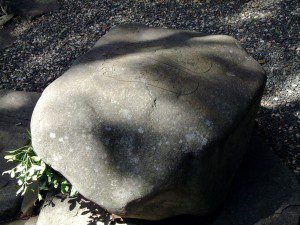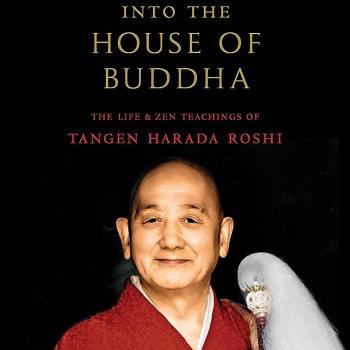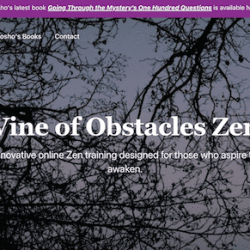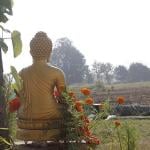 In a recent email exchange with Dosho, I made an offhand comment about “authentic practice.” Dosho, very reasonably, then asked me to explain what I mean by that. I want to acknowledge that there are lots of practices which I consider “authentic,” and that authentic practice can take lots of different forms in lots of different contexts. That said, my simple answer is that authentic practice has (at least) these two components:
In a recent email exchange with Dosho, I made an offhand comment about “authentic practice.” Dosho, very reasonably, then asked me to explain what I mean by that. I want to acknowledge that there are lots of practices which I consider “authentic,” and that authentic practice can take lots of different forms in lots of different contexts. That said, my simple answer is that authentic practice has (at least) these two components:
1. Authentic practice is radically, emphatically impersonal.
This practice is not about me. Of course, we arrive at spiritual practice because of something we want—answers to questions, or comfort, or (common in Zen) the means by which to become a particular kind of person, one we imagine must be wise or confident or compassionate. Those desires are natural and human, and they can serve as catalysts for positive action. Whatever brings us to the practice, we can be grateful for it. But the depth of the practice doesn’t offer the kinds of rewards we seek at the start.
One of the most critical aspects of practice is the experience of giving up. In a weeklong sesshin, it’s normal for participants—for some this happens in the first hour, though it seems to be most common (and most dramatic) about three days in—to waver in their commitment. The posture is zazen, but the mind is on fire with the question, “Why on earth am I here?” You think of the things you could be doing, and that shifts dramatically towards what you should be doing (“It was irresponsible of me to leave my family for so long—I should go home right away.” “I’ll never get that report in on time—what was I thinking?”). They decide that the pain in their legs is too much, that they’re hurting themselves. They say, “I’m just not ready for this.” Or whatever it is. And so a good number of people will just go home. But many—even though they have all those same impulses and all those same concerns—stay. They give up, but without moving from where they are. After that moment of letting go, in my experience, zazen suddenly reveals itself in a very different way, and the aches and pains and fears and excuses tend to largely fall from view. That moment of giving up is critical to this practice, but it is only possible when we hold ourselves to a standard that is not entirely comfortable, one which confronts us—and our stories about who we are, what we need, what we are capable of—directly.
It is a basic human impulse to “fix” what is uncomfortable—Zen training, in my experience, runs completely counter to that impulse. When we really commit to something (a teacher, perhaps, or a community, or even just a schedule), we don’t suddenly come to love all the things that were previously difficult or ill-fitting, but we do let go of the idea that we need to adapt that thing to make ourselves feel better.
Because I trained in Japanese monasteries and tend to do things in a way that seems formal or traditional, people often assume that I feel strongly about adhering strictly to traditional Soto Zen ceremonial forms. But that’s not really the case. My only real allegiance to traditional Soto forms, if I even have one, is that 99% of the time, when I see people adapting/rejecting/replacing them, it’s obvious that they’re doing so for their own comfort. The forms can fall away. They can be different forms. And they’re constantly changing anyway. But they offer us practitioners two things that are very difficult to manufacture on our own: (a) a strict and thorough template for action, which frees us from the potentially self-serving pitfalls of making things up; and (b) a kind of culture shock which forces us out of our comfort zones and begs the question—the very critical question—“What is this?”
If you are called upon to sing a song to a crowd of people, you can either refuse, or you can sing, offering your voice to those people and to the song itself. All the stuff you might add to that—saying you’re not a good singer, or insisting that you don’t know the song, or singing meekly out of embarrassment—only serves to make that experience about you. But it’s not about you. So in Zen, you just stand up and sing.
I have heard it said that Zen practice is recognizing that something is impossible and just doing it anyway. We don’t get to rehearse something until we get it right, nor do we get to offer excuses—we “get it right” by throwing ourselves into it completely. “Standing in one’s position,” which I wrote about last week, is like this. Vowing to save all beings is like this—if we hold up that vow to our own story of what we think we can and cannot do, we won’t even start (that, or we’ll drown in delusions of grandeur). But if we just do it, whatever it is—with all the flailing, human energy we can bring to that work—then that offering is complete. Nothing is lacking.
2. Authentic practice is expressed physically, moment by moment; that is, it is not purely internal or mental.
Zen practice, put very simply, is the practice of giving everything, in every moment, in every action (A student of mine once offered this definition: “Realizing the whole moment, in every moment, knowing it’s going to change.” Also true, and a beautiful way of putting it.). I think most people readily agree that practice should carry beyond just sitting in zazen, but what does that really look like?
Often, I think people misinterpret “continuous practice” to mean that they should be thinking Zen-like thoughts all the time, or that they should be doing mental exercises to cultivate compassion, or that they should be “mindful.” But if Zen is the practice of giving everything (I suppose there are many who would disagree with that simple definition)—if that’s the case—then when we walk, we give everything to walking. We invest ourselves in it completely. When we speak, we speak to the very best of our ability. When we sit, we sit as well as we can. In shikantaza we learn this very directly, to just sit as a complete activity, to be still actively, with every cell in our bodies. It’s the total activity of sitting still. But too often, when we try to bring zazen into the rest of the day, we imagine that what we’re bringing is a mindset, a kind of lens on the world. But it’s simpler than that: It’s the total activity of this moment.
I have known people (monk and lay) who express buddhadharma in the way they read a book, or in the way they step out of a car. But just a few. I have also known exalted Zen teachers (in Japan and around the world) who, for all their rank and training, still teach only with words. Those are too many to count.
To take it upon oneself to sit, stand, walk, lie down, dress, speak, listen, eat, breathe as a living expression of buddhadharma is a radically impersonal act, one which is probably born from an experience of impersonal training. This is not walking around like one’s image of a Zen person, putting on one’s roshi face and saying deep things all the time–it’s getting oneself out of the way so that when you walk, walking is your complete expression.
This action, whatever it is (answering the phone, washing the dishes, walking to the mailbox, bowing), is the climax of our lives—everything we have learned and experienced and thought up to now has been leading to this moment, and is expressing itself in this moment. We only have this moment once, and in this moment, this action is all we have—the rest is just a story. This action is our expression. If we invest ourselves, then this action is the full expression of itself, of living practice. It is the selfless offering of all we can offer. It is the realization of the moment. It is the fulfillment of vow.
I believe this is something we can recognize in others, and in ourselves. It is palpable. It does not look the same on any two individuals, but still, we can know it. For me, this kind of expression—which I forget and remember, forget and remember, countless times a day—is at the very center of the center of what it means to bring zazen into daily life, to do “continuous practice.”
(Thank you, Dosho, for the generous invitation to write about these things.)












